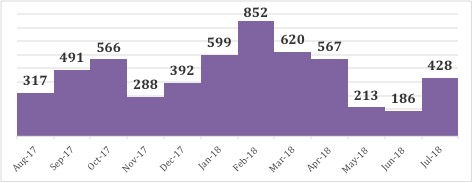Deploying eRegistries with all enhancements tools does not automatically improve data and information use, to achieve full usage and potential benefits of all such systems requires integrated supportive supervision at all levels and regular feedback to facilities. To fully achieve this the GHS is deploying to every facility in Ghana to use the Tracker capture for all preventive services such as TB care , ART/HIV and MCH services.
Background
The Policy Planning Monitoring and Evaluation Division of the Ghana Health Service in collaboration with the National TB Control Programme has developed a client based individual case management record system to collect, manage and analyze transactional case based records for TB screening, TB care & Treatment and TB dots in 113 TB burden district hospitals using the DHIS2 Tracker capture. This system called TB care eTracker has been deployed in Ghana especially in high TB burdened districts. The web version of the TB Care eTracker deployed in 2014 has worked but users have encountered key challenges. This includes:
- Limited or no Internet connectivity affecting its full usage to collect, manage and analyze transactional case based records for TB Care.
- Limited number of devices for screening and data capture at the hospitals especially in the TB burdened districts that were running the system.
- Data use and feedback to facilities from districts on tracking defaulters and generating visit schedules
Objectives
The key objective of deploying the tablet -based eTracker is to give service providers at the lower level access to client information safely, securely and easily, whenever and wherever it is needed. It is an essential part of the drive by the Ghana Health Service to improve patient care by enabling CHOs and other GHS staff to increase their efficiency and effectiveness. To achieve a full spectrum of the immense benefits of using the eTracker at the lower level its key that we are deploying the eTrcaker to key programmes such as TB care and screening, ART HIV care and MCH services across the country
In August 2018, 226 health care providers, 113 districts health information management system (HIO) and 20 regional HIO and their deputies from 113 priority districts health facilities were trained on data entry, reporting and on data use.
The figure below outlines the number of patients for whom the questionnaire on TB sign and symptoms were completed and entered into system. What is the reason of variation over time? The NTP programme confirmed that the completion of entry increases around supervisory visits clearly confirming that there is that human actor , change management process that needs to be addressed in any deployment such as the TB care Tracker capture.
